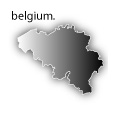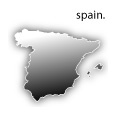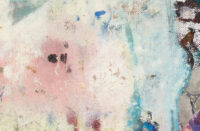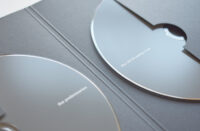
>>> Key
::..:::…..:..::….:::::..:::..:::::::……:::…::.:::….::::..:..:::…::…….::::
 :: London and Reading-based Robin Saville and Antony Ryan have been recording as Isan since 1996. Meet Next Life simply glows. Glowing a spiritual levitating light. “First Date – Jumble Sale” is a whimsical and poppy microtonal flight that uses short-order melodic percussion. This may be the first true instrumental micropop record of 2004 as “One man Abandon” spits teeny tiny shreds of understated clicks amid its glossy layer of pre-pubescent Depeche Mode synthetic toy licks. Isan creates atmosphere, lighter than thin air. And then there is “Gurnard” – something of melodramatic implication and charismatic splendor. The slow moving purr uses the foundations of baby clicks and cuts and breeds the sweetest feminisms with a metered harmonic tenacity. It has a hint of cartoonish fare, but nothing of the ilk of Spike & Mike – more influenced by fluffier, childlike Japanimation. I’m reminded of a caffeinenated Brothers Quay. If post-traumatic stress disorder were a pre-existing condition for rehab through sound therapy – this would be the stuff! “Meet Next Life” is like Stereolab without vocal, if the melancholy were upgraded a few stages, finely apparent on the tonally syllabic “Iron Eyes.” The completely lethargic pace of “Snowdrops and Phlox” uses post-Cocteau Twins styled phrasing, emitting a glazed over intoxicating space age cocktail for the senses to indulge and freefall. Filled with pure mischief, and good-natured play, Isan takes us on an aural vacation. Vibrant, effervescent – a perfectly crafted electronic recording.
:: London and Reading-based Robin Saville and Antony Ryan have been recording as Isan since 1996. Meet Next Life simply glows. Glowing a spiritual levitating light. “First Date – Jumble Sale” is a whimsical and poppy microtonal flight that uses short-order melodic percussion. This may be the first true instrumental micropop record of 2004 as “One man Abandon” spits teeny tiny shreds of understated clicks amid its glossy layer of pre-pubescent Depeche Mode synthetic toy licks. Isan creates atmosphere, lighter than thin air. And then there is “Gurnard” – something of melodramatic implication and charismatic splendor. The slow moving purr uses the foundations of baby clicks and cuts and breeds the sweetest feminisms with a metered harmonic tenacity. It has a hint of cartoonish fare, but nothing of the ilk of Spike & Mike – more influenced by fluffier, childlike Japanimation. I’m reminded of a caffeinenated Brothers Quay. If post-traumatic stress disorder were a pre-existing condition for rehab through sound therapy – this would be the stuff! “Meet Next Life” is like Stereolab without vocal, if the melancholy were upgraded a few stages, finely apparent on the tonally syllabic “Iron Eyes.” The completely lethargic pace of “Snowdrops and Phlox” uses post-Cocteau Twins styled phrasing, emitting a glazed over intoxicating space age cocktail for the senses to indulge and freefall. Filled with pure mischief, and good-natured play, Isan takes us on an aural vacation. Vibrant, effervescent – a perfectly crafted electronic recording.
::..:::…..:..::….:::::..:::..:::::::……:::…::.:::….::::..:..:::…::…….::::
 :: This is a split 3″ starring , the prolific Mr. Null who is back in his 200th (?) recording with two new tracks, remixed by miniwagonwheel by the masked duo Ovo (Stefania Pedretti and Italian Bar La Muerte’s bossman Bruno Dorella). Fortysomething Null’s 4-minute single piece “Protostar” is bubbly electronica, which he spins off once in a while with lively precision. Blips, pitter-patter percussion and frequency shifts make this an interesting listen over a distorted sequencer. Ovo’s catastro-rock creeps like a menacing fat cat who can smell lunch from 500 yards away and will climb heights to get it on the aptly titled “Claws.” These “non-musicians” kick up a fuss on the randomly guitar hysteria of the back end of said cat on “Tails” and its anyone’s guess where this laughing gas will lead. Is this a rude and cruel takeover? Is this gothic Godzilla grunge? I do not get the connection between the two artists on this disc though; completely separate sensibilities, especially given that Null is a bit extended from his more radical hardcore noise shell here. At less than eight minutes this is a brief exposure to a potential work in progress -a collaboration? If the missing animated limbs on the cover were to attest someone is keeping a big secret here…but it sounds like they are having a LOT of fun. Since they are set on touring – a suggested great double bill with Reynols, triple with the Haters!
:: This is a split 3″ starring , the prolific Mr. Null who is back in his 200th (?) recording with two new tracks, remixed by miniwagonwheel by the masked duo Ovo (Stefania Pedretti and Italian Bar La Muerte’s bossman Bruno Dorella). Fortysomething Null’s 4-minute single piece “Protostar” is bubbly electronica, which he spins off once in a while with lively precision. Blips, pitter-patter percussion and frequency shifts make this an interesting listen over a distorted sequencer. Ovo’s catastro-rock creeps like a menacing fat cat who can smell lunch from 500 yards away and will climb heights to get it on the aptly titled “Claws.” These “non-musicians” kick up a fuss on the randomly guitar hysteria of the back end of said cat on “Tails” and its anyone’s guess where this laughing gas will lead. Is this a rude and cruel takeover? Is this gothic Godzilla grunge? I do not get the connection between the two artists on this disc though; completely separate sensibilities, especially given that Null is a bit extended from his more radical hardcore noise shell here. At less than eight minutes this is a brief exposure to a potential work in progress -a collaboration? If the missing animated limbs on the cover were to attest someone is keeping a big secret here…but it sounds like they are having a LOT of fun. Since they are set on touring – a suggested great double bill with Reynols, triple with the Haters!
::..:::…..:..::….:::::..:::..:::::::……:::…::.:::….::::..:..:::…::…….::::
 :: Using his own name after output as Augur, Steve Brand is one of those true artists, without gloss and flicker, who makes dreamlike ambient music with a jagged edge. The Quiver of Dreams, recorded in 2002 uses an assortment of field recordings, handmade and found studio sounds that sound more like ceremonial rituals than songs. The title track is something like an altered set of chimes, the edges are not refined and smooth, more like an organically prepared music box. Brand’s sound has a visual impact that is illustrative of work by Hans Bellmer or Francis Bacon. The Quiver of Dreams is like the frenetic pressure anxiously conserved in the moments prior to the pounce of a wired jack-in-the-box, animating its still life. This is dramatically subconscious on a number of levels, and on “No Music” it could hardly be called silence, more like a few agitated babies playing with toy blocks under the table at a formal tea ceremony caught on cassette tape, but chaotically disrupted by the push-pull of its player, filled with skips and fragments and crooked frequencies all the way through. Completely unexpected, as usual.
:: Using his own name after output as Augur, Steve Brand is one of those true artists, without gloss and flicker, who makes dreamlike ambient music with a jagged edge. The Quiver of Dreams, recorded in 2002 uses an assortment of field recordings, handmade and found studio sounds that sound more like ceremonial rituals than songs. The title track is something like an altered set of chimes, the edges are not refined and smooth, more like an organically prepared music box. Brand’s sound has a visual impact that is illustrative of work by Hans Bellmer or Francis Bacon. The Quiver of Dreams is like the frenetic pressure anxiously conserved in the moments prior to the pounce of a wired jack-in-the-box, animating its still life. This is dramatically subconscious on a number of levels, and on “No Music” it could hardly be called silence, more like a few agitated babies playing with toy blocks under the table at a formal tea ceremony caught on cassette tape, but chaotically disrupted by the push-pull of its player, filled with skips and fragments and crooked frequencies all the way through. Completely unexpected, as usual.
::..:::…..:..::….:::::..:::..:::::::……:::…::.:::….::::..:..:::…::…….::::
 :: Sound sculptor, Steve Barsotti, takes field recordings from everyday occurrences, a can opener, chair, heat source and uses a range of reduction practices to amplify their debunked state. He developed the sounds with fellow artists Olivia Block and Tod Szeczyk. What he ends up with is assorted white noise and variable residue minutiae. By playing with the tones of open electricity on “Noise Reduction on Back Porch” he would unnerve any chirping sparrow or cricket into other neighborhoods, it makes my hair stand on end. This random segment lasts for about 1/5 of the piece, but when it ceases it opens new worlds of drone, and relaxes your ability to listen. It’s interactive listening, forcing you to endure the good, bad and ugly. If you try to rationalize this you may think Barsotti were visiting a wild boar farm to record veterinarians brushing the hog’s teeth. The bristling music concrete drudges up some powdery drone and quietude, landing back in a field as wide as an ocean. “Tintapemic” is made to be a 5.1 Surround Sound piece that extends way out from my headphones, though you can instantly recognize how Barsotti has sculpted an aural experience, rather than straight sound. The scraping, fragmented frequency and other cut-up samples make this disc a stand out track.
:: Sound sculptor, Steve Barsotti, takes field recordings from everyday occurrences, a can opener, chair, heat source and uses a range of reduction practices to amplify their debunked state. He developed the sounds with fellow artists Olivia Block and Tod Szeczyk. What he ends up with is assorted white noise and variable residue minutiae. By playing with the tones of open electricity on “Noise Reduction on Back Porch” he would unnerve any chirping sparrow or cricket into other neighborhoods, it makes my hair stand on end. This random segment lasts for about 1/5 of the piece, but when it ceases it opens new worlds of drone, and relaxes your ability to listen. It’s interactive listening, forcing you to endure the good, bad and ugly. If you try to rationalize this you may think Barsotti were visiting a wild boar farm to record veterinarians brushing the hog’s teeth. The bristling music concrete drudges up some powdery drone and quietude, landing back in a field as wide as an ocean. “Tintapemic” is made to be a 5.1 Surround Sound piece that extends way out from my headphones, though you can instantly recognize how Barsotti has sculpted an aural experience, rather than straight sound. The scraping, fragmented frequency and other cut-up samples make this disc a stand out track.
Say “tin-tah-pee-mick is an impassioned sound experiment with Jackson Pollock-like random improv and sonic atmosphere for days. You are in the middle of an air raid at a car dealership, and the only place to hide is within yourself. The piece uniquely crosses ambience with tonal latitude alongside a mix of creaking madness. For the last few minutes it just smolders. Also here are two live performances recorded at Seattle’s Polestar Music Gallery, a luminary somewhat new spot in the Pacific Northwest. The pieces both titled “Hey” (well, one is called “HEY”) are excerpts from the Threshold of Hearing/Threshold of Pain series curated by Alex Keller, a music educator interested in the silences of sound technology. The first of the two pieces is quite; all but some extremely fine static electricity are audible. This was without a doubt a chilling challenge to the audience. On “HEY” you can hear the rustling of some very fine objects in the background, silence and then, THUD, static reverb and voila – ignition! The feedback throbs and releases and gives it another go around. This is a contained construction site with an envy of machine guns, but more like those you would find on Xbox than in real time war zones. There’s a delectable messiness about this record that is instinctively remote but that can’t stop him.
::..:::…..:..::….:::::..:::..:::::::……:::…::.:::….::::..:..:::…::…….::::
 :: Listening to many new discs that incorporate field recordings I notice some very frequent repeating elements, birds, water and wood taken by fire or trodden upon. In 43 minutes Scott Taylor’s Leaving Eden examines these and other found around sounds very copiously. He samples the sounds of the goings-on in Notre Dame Cathedral (choirs, organs) and through his capture of divisions of light in many European cities. The title track is provocatively delicate as he manipulates and layers these varied sounds to create something akin to the solitude of his very own peaceful Japanese rock garden. Echoing baby voices, the sails of a small boat at sea, the tender whistle of the wind all meld in accord. This is surround-sound filled with the keys in the pocket of a passerby, heeled feet in the rain, and a continuous re-emergence of a grandiose fountain pouring reflective H2O. Leaving Eden is meditational. On the nearly 20-minute “Plumes of Static and Smoke” Taylor opens with the pacing of a man’s feet on a wooden floor, shuffling somewhat anxiously. Once his feet become still a static storm rolls in to the curve of a barely audible pixie-like wooden whistle, drown in and out by the overlapping sounds that dangerously cross water and electricity, the clap of thunder turns to an ocean wave and then into a few piddly raindrops all within less than 30 seconds, edited perfectly together to sound like a stream of consciousness. The sounds of a hacksaw, industry, the imaginary sweat from the workers’ faces, take you through large outdoor spaces to internal fumbling with your desktop mouse. Taylor has truly captured the live sounds in such a way that the brain follows its point of view, playing frequently with the aural depth of field.
:: Listening to many new discs that incorporate field recordings I notice some very frequent repeating elements, birds, water and wood taken by fire or trodden upon. In 43 minutes Scott Taylor’s Leaving Eden examines these and other found around sounds very copiously. He samples the sounds of the goings-on in Notre Dame Cathedral (choirs, organs) and through his capture of divisions of light in many European cities. The title track is provocatively delicate as he manipulates and layers these varied sounds to create something akin to the solitude of his very own peaceful Japanese rock garden. Echoing baby voices, the sails of a small boat at sea, the tender whistle of the wind all meld in accord. This is surround-sound filled with the keys in the pocket of a passerby, heeled feet in the rain, and a continuous re-emergence of a grandiose fountain pouring reflective H2O. Leaving Eden is meditational. On the nearly 20-minute “Plumes of Static and Smoke” Taylor opens with the pacing of a man’s feet on a wooden floor, shuffling somewhat anxiously. Once his feet become still a static storm rolls in to the curve of a barely audible pixie-like wooden whistle, drown in and out by the overlapping sounds that dangerously cross water and electricity, the clap of thunder turns to an ocean wave and then into a few piddly raindrops all within less than 30 seconds, edited perfectly together to sound like a stream of consciousness. The sounds of a hacksaw, industry, the imaginary sweat from the workers’ faces, take you through large outdoor spaces to internal fumbling with your desktop mouse. Taylor has truly captured the live sounds in such a way that the brain follows its point of view, playing frequently with the aural depth of field.
::..:::…..:..::….:::::..:::..:::::::……:::…::.:::….::::..:..:::…::…….::::
 :: Using homemade percussive instruments and electronics in conjunction with traditional drums and cymbals, Will Guthrie designs a sound atmosphere that is lit by the cast of an ambitious dark ambient drone. The solemn bell tones and metallic chiming and other repetitive clanging illustrates a haunted place on the disc opener “Blanket.” Guthrie captures a fusion of fear and unknown with a base tribal stillness and micro percussion. The result is quite startling. On “Eleven” an austere cavity is developed in the randomness of clinkering objects that remind me somewhat of jazz drummer Matt Wilson’s work. Though Guthrie has his own sound personality, his own space – dedicated to a sort of imperfect precision. This dichotomy is further explored on the drowsy beginning of “Westspace”. More like an air stream through a dank alley, this piece has the sobering quality of an inclement, lethargic Sunday morning with a constant uneven water leak from outside. The chattering percussion, along with a cool bellhop ching gives Building Blocks both an Asian bicycle melody with a built-in urban alert. Guthrie has created a record with extreme attention to the higher principles of living through Feng Shui while containing something of a soundtrack for an alternate universe.
:: Using homemade percussive instruments and electronics in conjunction with traditional drums and cymbals, Will Guthrie designs a sound atmosphere that is lit by the cast of an ambitious dark ambient drone. The solemn bell tones and metallic chiming and other repetitive clanging illustrates a haunted place on the disc opener “Blanket.” Guthrie captures a fusion of fear and unknown with a base tribal stillness and micro percussion. The result is quite startling. On “Eleven” an austere cavity is developed in the randomness of clinkering objects that remind me somewhat of jazz drummer Matt Wilson’s work. Though Guthrie has his own sound personality, his own space – dedicated to a sort of imperfect precision. This dichotomy is further explored on the drowsy beginning of “Westspace”. More like an air stream through a dank alley, this piece has the sobering quality of an inclement, lethargic Sunday morning with a constant uneven water leak from outside. The chattering percussion, along with a cool bellhop ching gives Building Blocks both an Asian bicycle melody with a built-in urban alert. Guthrie has created a record with extreme attention to the higher principles of living through Feng Shui while containing something of a soundtrack for an alternate universe.
::..:::…..:..::….:::::..:::..:::::::……:::…::.:::….::::..:..:::…::…….::::
 :: Drone as ornament, vibrant as crystal, cool as ice. Marcus Obst as Dronæment creates an imaginary sound amphitheater of the grotesque and divine. There are flying craft buzzing and earthy crunching on the opening “Moon Drone.” Ezoterick Soundzscapes harvests lost memories. Obst’s industrial environment with random flowing waters, is some type of inter-dimensional space wasteland on the compelling “PSW1.” By referencing a hydroelectric power station his sound comes alive in dappled animation like watercolor to paper. Mystery Sea continues to develop their enhanced handmade packaging with rich amber and tones of rust, which wholly illustrate the composition. “PSW2” starts up resembling a continuous psychedelic buzz saw and pauses for air, a crisp downpour and a dubious respite. Towards the finale Obst adds a flavor of Indian circular percussion that is its tribal climax. In some famous words “you might ask yourself, how did I get here?”
:: Drone as ornament, vibrant as crystal, cool as ice. Marcus Obst as Dronæment creates an imaginary sound amphitheater of the grotesque and divine. There are flying craft buzzing and earthy crunching on the opening “Moon Drone.” Ezoterick Soundzscapes harvests lost memories. Obst’s industrial environment with random flowing waters, is some type of inter-dimensional space wasteland on the compelling “PSW1.” By referencing a hydroelectric power station his sound comes alive in dappled animation like watercolor to paper. Mystery Sea continues to develop their enhanced handmade packaging with rich amber and tones of rust, which wholly illustrate the composition. “PSW2” starts up resembling a continuous psychedelic buzz saw and pauses for air, a crisp downpour and a dubious respite. Towards the finale Obst adds a flavor of Indian circular percussion that is its tribal climax. In some famous words “you might ask yourself, how did I get here?”
::..:::…..:..::….:::::..:::..:::::::……:::…::.:::….::::..:..:::…::…….::::
 :: Tokyo electronic kid Vauxhaul 44 (Yuki Kiba) makes minimal techno, with a focus on keeping a groove on while distorting playful, errata. This is the stripped down inversion of what a deprogrammed guitar could possibly do, and then some. “KEYTH” encourages even the fickle to boogie to its bubble beats. This debut record is up-up-up – kind of an all night spin. What I like about Sub-I is its very youthful spirit – like he’s captured an amusement park in full swing – just hold on for the ride of your life, bumpy or not! On “YKNLS” Kiba factures his askew beats with an arrangement that sounds like a toxically induced dizzy spell. Vauxhaul 44’s preoccupation with tonal play is what keeps this thrills rather than frills – and his watery mix of “MIW” attests to his love for the fool in us all. On “KLIAR” he builds in funky introspection and reflective clicks and other electronic space sounds for good measure. This is quite good!
:: Tokyo electronic kid Vauxhaul 44 (Yuki Kiba) makes minimal techno, with a focus on keeping a groove on while distorting playful, errata. This is the stripped down inversion of what a deprogrammed guitar could possibly do, and then some. “KEYTH” encourages even the fickle to boogie to its bubble beats. This debut record is up-up-up – kind of an all night spin. What I like about Sub-I is its very youthful spirit – like he’s captured an amusement park in full swing – just hold on for the ride of your life, bumpy or not! On “YKNLS” Kiba factures his askew beats with an arrangement that sounds like a toxically induced dizzy spell. Vauxhaul 44’s preoccupation with tonal play is what keeps this thrills rather than frills – and his watery mix of “MIW” attests to his love for the fool in us all. On “KLIAR” he builds in funky introspection and reflective clicks and other electronic space sounds for good measure. This is quite good!
::..:::…..:..::….:::::..:::..:::::::……:::…::.:::….::::..:..:::…::…….::::
 :: The buzz is here and it is stinging sharply. Memphis-bred, London-based We’re Breaking Up (Michael Rodgers) takes a slew of random wires in his bare hands and shoots off a rainbow of sparks. Maybe not literally, but Here and Above proves that this man can make some noise, albeit fermenting and caged – you feel the building white noise pressure. His name alone, referring to the technical difficulties experienced in the many forms of communication, space or otherwise, helps you to imagine a mission – as do the titles like “Cold Vapours,” “Listen Monolithic” and “Gaping Skyward.” You can only imagine the less ethical side of the inferences here – the vaporization of the body outside of gravity, the fade of glory of several unsuccessful attempts to meet other worlds head-on in space, and so on. Through a veil of atonal static and mechanical electronics this sort of conceptually tells me a tale of the final hours of a team of galaxy travelers whose uncharted link in hyperspace is way off course. Now, all sci-fi aside, Here and Above is comprised of two lengthy tracks clocking in at just about an hour. Rodgers takes the improvisation of electronics to a barren wasteland, it glows and flashes and fizzes to the end.
:: The buzz is here and it is stinging sharply. Memphis-bred, London-based We’re Breaking Up (Michael Rodgers) takes a slew of random wires in his bare hands and shoots off a rainbow of sparks. Maybe not literally, but Here and Above proves that this man can make some noise, albeit fermenting and caged – you feel the building white noise pressure. His name alone, referring to the technical difficulties experienced in the many forms of communication, space or otherwise, helps you to imagine a mission – as do the titles like “Cold Vapours,” “Listen Monolithic” and “Gaping Skyward.” You can only imagine the less ethical side of the inferences here – the vaporization of the body outside of gravity, the fade of glory of several unsuccessful attempts to meet other worlds head-on in space, and so on. Through a veil of atonal static and mechanical electronics this sort of conceptually tells me a tale of the final hours of a team of galaxy travelers whose uncharted link in hyperspace is way off course. Now, all sci-fi aside, Here and Above is comprised of two lengthy tracks clocking in at just about an hour. Rodgers takes the improvisation of electronics to a barren wasteland, it glows and flashes and fizzes to the end.
::..:::…..:..::….:::::..:::..:::::::……:::…::.:::….::::..:..:::…::…….::::
 :: Opening with a rendition of Ornette Coleman’s “Sadness” I wasn’t really sure what to expect from my first opportunity to hear Pau Torres and collaborators. The poignant piece is in fact a great, tin-pan alley-style piece with a meandering horn and some brewing glitchy electronica that is quite restrained. The percussion is way down low, the crunchy prepared piano and other toys just make this a rollicking affair without at all being slaphappy. Actually, there are some quite eerie moments here, especially on the “Nouvelle Couisine” which could be an Italian feast played backwards through the rain viewed through an oscilloscope. The passing voices of Brit-lipped men and women chattering as if in a smoky jazz club among revelers plays well against the snake that is the clarinet that plays throughout My Wrong Mood. This is a dramatic, postmodern re-enactment of the very roots of jazz, with some Spanish guitar on the vivacious “Lot Old Radio” which delves into cricket-like electronics and static withdrawal. A pan to catch leaking rain, that consumes the air with its melodic echo only to become a domino effect of other percussive micro-currents on the effective (but too short) “Fragments” (well, I guess that’s what I get). The fragile radio transmissions of “Untitled” lead way to an atmosphere of drawn out bossa nova and seasick tropicalisms. Torres brings his record to a cool and definitive climax with a Godspeed You Black Emperor meets Stars of the Lid bare, essential luminescence on “Sqawmp Banjo.” My Wrong Mood is a formidably challenging piece of sound art that casts a hue of out jazz drama while remaining essential electronic music.
:: Opening with a rendition of Ornette Coleman’s “Sadness” I wasn’t really sure what to expect from my first opportunity to hear Pau Torres and collaborators. The poignant piece is in fact a great, tin-pan alley-style piece with a meandering horn and some brewing glitchy electronica that is quite restrained. The percussion is way down low, the crunchy prepared piano and other toys just make this a rollicking affair without at all being slaphappy. Actually, there are some quite eerie moments here, especially on the “Nouvelle Couisine” which could be an Italian feast played backwards through the rain viewed through an oscilloscope. The passing voices of Brit-lipped men and women chattering as if in a smoky jazz club among revelers plays well against the snake that is the clarinet that plays throughout My Wrong Mood. This is a dramatic, postmodern re-enactment of the very roots of jazz, with some Spanish guitar on the vivacious “Lot Old Radio” which delves into cricket-like electronics and static withdrawal. A pan to catch leaking rain, that consumes the air with its melodic echo only to become a domino effect of other percussive micro-currents on the effective (but too short) “Fragments” (well, I guess that’s what I get). The fragile radio transmissions of “Untitled” lead way to an atmosphere of drawn out bossa nova and seasick tropicalisms. Torres brings his record to a cool and definitive climax with a Godspeed You Black Emperor meets Stars of the Lid bare, essential luminescence on “Sqawmp Banjo.” My Wrong Mood is a formidably challenging piece of sound art that casts a hue of out jazz drama while remaining essential electronic music.
::..:::…..:..::….:::::..:::..:::::::……:::…::.:::….::::..:..:::…::…….::::
 :: Paper creates an ambient texture as Jason Kahn and Jon Mueller explore on Papercuts. At its most minimal stages as a source for percussion the use of such a genuinely common daily product to document its surface and function is fascinating. Sure, paper has been for almost every purpose, and even to prepare other instruments to alter their traditional abilities. What appears here, though, is something much more sonorous and almost mythical. Kahn and Mueller mutate the molecular structures that pattern the pulp, you can almost imagine the hands touch along a rough ragged edge as pages turn and micro-fine crackling hums like a low riding fire. In fact, this eighteen-minute piece elegy to the source that brings us both the good and the bad news daily is formatted as a means to an end. Slowly the crescendo of crackling, filtered rumbling and other process noise continues to recycle upon itself like a snake chasing its tail until it’s built a less random structure. Peacefully paced, reminding me of “Tropos” an installation work by artist Ann Hamilton (1993). Paper comes from wood, fire obliterates wood, and paper cannot be formed from ash. Ashes to ashes…
:: Paper creates an ambient texture as Jason Kahn and Jon Mueller explore on Papercuts. At its most minimal stages as a source for percussion the use of such a genuinely common daily product to document its surface and function is fascinating. Sure, paper has been for almost every purpose, and even to prepare other instruments to alter their traditional abilities. What appears here, though, is something much more sonorous and almost mythical. Kahn and Mueller mutate the molecular structures that pattern the pulp, you can almost imagine the hands touch along a rough ragged edge as pages turn and micro-fine crackling hums like a low riding fire. In fact, this eighteen-minute piece elegy to the source that brings us both the good and the bad news daily is formatted as a means to an end. Slowly the crescendo of crackling, filtered rumbling and other process noise continues to recycle upon itself like a snake chasing its tail until it’s built a less random structure. Peacefully paced, reminding me of “Tropos” an installation work by artist Ann Hamilton (1993). Paper comes from wood, fire obliterates wood, and paper cannot be formed from ash. Ashes to ashes…
::..:::…..:..::….:::::..:::..:::::::……:::…::.:::….::::..:..:::…::…….::::
 :: After a few years absent Frans de Waard re-emerges with the final work by Kapotte Muziek, at it since 1984. The newest full-length Curing Without Killing may wake the dead with its staccato drone and linear, twisting core. His sounds vibrate with a precision of something like a microfine saw of some kind delivering something that seems like a creaky door that’s been muted and mixed and layered. In a straight-shot 43-minutes Kapotte Muziek defies normal conventions, whatever may remain, and test our ability to accept buzzing tone that draws with light for instance. Hard wired. Dedicated to Cefas Van Rossem and Andrew McKenzie the breathy and ambient to atonal, unsympathetic storyline follows the unnerving discovery that the body is truly not under when going through medical operations. de Waard wonderfully terms this “operating theater” since the body can still sense acoustics in this state of un/consciousness. The final 20 minutes here could induce some form of industrial slumber, though its demeanor is lax, there is an alluring intuition for things feared, yet unseen, just chilling. The apparatus is in motion; it’s like a taffy machine twisting chaotically wrapping and spindling, rubbery and apprehensive. With this in mind, and all of the truly fantastic sound recycling that has been created over almost two decades, will Kapotte Muziek, really, ever put itself to rest?
:: After a few years absent Frans de Waard re-emerges with the final work by Kapotte Muziek, at it since 1984. The newest full-length Curing Without Killing may wake the dead with its staccato drone and linear, twisting core. His sounds vibrate with a precision of something like a microfine saw of some kind delivering something that seems like a creaky door that’s been muted and mixed and layered. In a straight-shot 43-minutes Kapotte Muziek defies normal conventions, whatever may remain, and test our ability to accept buzzing tone that draws with light for instance. Hard wired. Dedicated to Cefas Van Rossem and Andrew McKenzie the breathy and ambient to atonal, unsympathetic storyline follows the unnerving discovery that the body is truly not under when going through medical operations. de Waard wonderfully terms this “operating theater” since the body can still sense acoustics in this state of un/consciousness. The final 20 minutes here could induce some form of industrial slumber, though its demeanor is lax, there is an alluring intuition for things feared, yet unseen, just chilling. The apparatus is in motion; it’s like a taffy machine twisting chaotically wrapping and spindling, rubbery and apprehensive. With this in mind, and all of the truly fantastic sound recycling that has been created over almost two decades, will Kapotte Muziek, really, ever put itself to rest?
::..:::…..:..::….:::::..:::..:::::::……:::…::.:::….::::..:..:::…::…….::::
 :: Daedelus and Frosty make up the duo that are Adventure Time. This is one of those fun-to-discover records like Cornershop, Filter, PM Dawn, Crystal Method, and a host of folks with their own sound. Funky hip-hop lipstylin’, nervous whistling, the essence of Billie Holiday and assorted sound effects make them sound at first like a modern day De La Soul meeting say, Malcolm McClaren for the first time. This adventure busts a move to sea, upstream, back paddling over currents of mainstream electronica and out of the blue hints of twangy rubber banjo (“Eel Sand Witch”), Baltimore dancehall (“General Midi vs. Rusty 4eyes”) and ballroom orchestral mambo (“Sent from Sandy Shores”) with accompaniment from the spoken word of Saul Williams and Sacajawea’s bassy broad croon. This is a completely fictitious experiment with lil’ snippets for stories and chanting African kids on the lopsided post-edited “Girl of the Well.” The short passages between tracks (“Water Plop,” “My Musical Friend,” “Hypnotized Arms”) are narrated by 1950’s styled commercial, well coiffed banter is all so Jiffy Pop. The made-for-PBS mode of the closer “Rusty Anchors Wrestling Waves” toys with field recording sound effects with e terrific backbeat, but it defies any feet to dance linearly – its more a test of your listening sensibilities. Are those church chimes…a busted buoy –yo-da-lay-hee-who?
:: Daedelus and Frosty make up the duo that are Adventure Time. This is one of those fun-to-discover records like Cornershop, Filter, PM Dawn, Crystal Method, and a host of folks with their own sound. Funky hip-hop lipstylin’, nervous whistling, the essence of Billie Holiday and assorted sound effects make them sound at first like a modern day De La Soul meeting say, Malcolm McClaren for the first time. This adventure busts a move to sea, upstream, back paddling over currents of mainstream electronica and out of the blue hints of twangy rubber banjo (“Eel Sand Witch”), Baltimore dancehall (“General Midi vs. Rusty 4eyes”) and ballroom orchestral mambo (“Sent from Sandy Shores”) with accompaniment from the spoken word of Saul Williams and Sacajawea’s bassy broad croon. This is a completely fictitious experiment with lil’ snippets for stories and chanting African kids on the lopsided post-edited “Girl of the Well.” The short passages between tracks (“Water Plop,” “My Musical Friend,” “Hypnotized Arms”) are narrated by 1950’s styled commercial, well coiffed banter is all so Jiffy Pop. The made-for-PBS mode of the closer “Rusty Anchors Wrestling Waves” toys with field recording sound effects with e terrific backbeat, but it defies any feet to dance linearly – its more a test of your listening sensibilities. Are those church chimes…a busted buoy –yo-da-lay-hee-who?
::..:::…..:..::….:::::..:::..:::::::……:::…::.:::….::::..:..:::…::…….::::
Essential Links ::
::..:::…..:..::….:::::..:::..:::::::……:::…::.:::….::::..:..:::…::…….::::
Read more Microview’s ::
::..:::…..:..::….:::::..:::..:::::::……:::…::.:::….::::..:..:::…::…….::::
*Note :: Graphic for this country not available at time of publication.













![Pole :: Tempus Remixes (Mute) — [concise]](https://igloomag.com/wp/wp-content/uploads/2025/04/pole-tempus-remixes_feat-75x75.jpg)






![Hasbeen :: Bunker Symphonies II (Clean Error) — [concise]](https://igloomag.com/wp/wp-content/uploads/2025/04/hasbeen-bunker-symphonies-ii_feat-75x75.jpg)
